|
WADING BIRDS AND THEIR ALLIES
OF NORTH AMERICA |
|---|
| 6 Page Laminated Guide |
| Outside 3 Pages Opens to 11" by 25" |
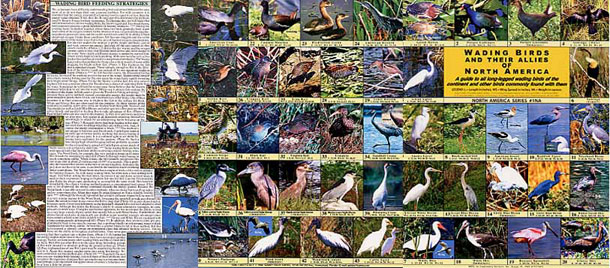 |
|
WADING BIRDS AND THEIR ALLIES
OF NORTH AMERICA |
|---|
| 6 Page Laminated Guide |
| Outside 3 Pages Opens to 11" by 25" |
 |
| Wading Bird Feeding Strategies Outside page, 8" by 11". Folds inside. |
Back Page Folds to 8.5" by 11" |
Front Page Folds to 8.5" by 11" |
|---|
|
|
|
|---|---|
| Wading Bird Feeding Strategies Page | |
| Close-up Of Upper Left Corner | Page Description |
|
|
Here we see nature's fisherman at work. The page discusses how various wading birds hunt for food - stressing variations in feeding behavior and the reasons for them. With such information it is easy for the reader to figure out on his own how water levels and fluctuations impact wading birds in general and particular species uniquely. |
|
|
||
|
Typical Species' Photos |
||
|
(Actual size approximately 1.7" by 2") |
||
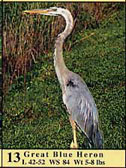 |
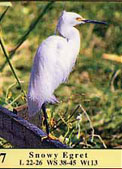 |
The two photos to the left are representative of those contained in this guide, which includes all the continent's (north of Mexico) long-legged wading birds. (Even the elusive rails are covered!) Length (L), wing spread (WS) and weight (Wt) statistics are listed under each species' common name. In the examples given only one plumage is represented. However, when breeding and winter plumages are significantly different both are shown. Also photos represent immature, color phase and sexual differences. Numbers refer to species' text blocks on the publication inside pages. |
|
|
|---|
| Inside 3 Pages Opens to 11" by 25" |
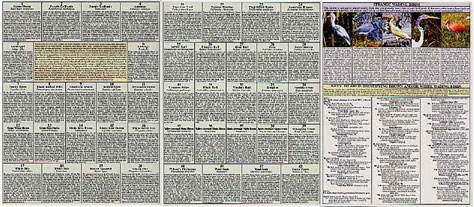 |
|
|
|
| Text Blocks | |
| (Actual size approximately 1.7" by 2.2") | |
 |
The first two inside pages contain text boxes (see sample to left) corresponding to each species pictured on the front. These provide common and scientific name, identification aids and usually something of the behavior traits and history of that species or wading birds in general. SAMPLE OF ROSEATE SPOONBILL TEXT: The showiest and largest of all North American ibis. This trait nearly led to its downfall as hunting to obtain its feathers reduced the U.S. population to 30 by 1939. Roseates possess a highly specialized feeding technique that relies on touch rather than sight. While wading, the flat, spatula-shaped open bill is swung from side to side slicing through the water in a wide arc. When nerve endings along the inner lining of the bill touch a living organism, the bill snaps shut involuntarily, trapping the prey. Even captive birds raised from infancy feed in this manner although prey may be clearly visible. Very young Roseates are all white but quickly become pink. Malnourished or captive birds lose their pink coloration which can be restored with proper diet. |
|
|
|
|---|---|
| Third Inside Page | |
| Strange Wading Birds | Key to Identifying Brown And/Or White Wading Birds |
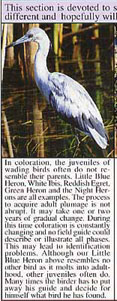 |
The third inside page upper section discusses strange looking wading birds generally not shown in field guides. Pictured are birds in high breeding and exotic brilliant plumage as well as other temporary or rare conditions. The example to the left concerns juvenile wading birds whose coloration does not resemble the adult bird. As in the case of the pictured Little Blue Heron, coloration may change gradually for years as they molt into adulthood. |
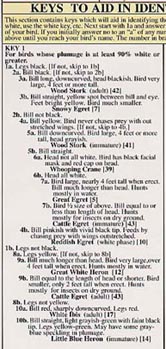 |
The lower portion of the page contains a key to assist in identifying the notoriously confusing brown and/or white wading birds. Numbers next to the bird names refer back to photos and text for that particular species. |